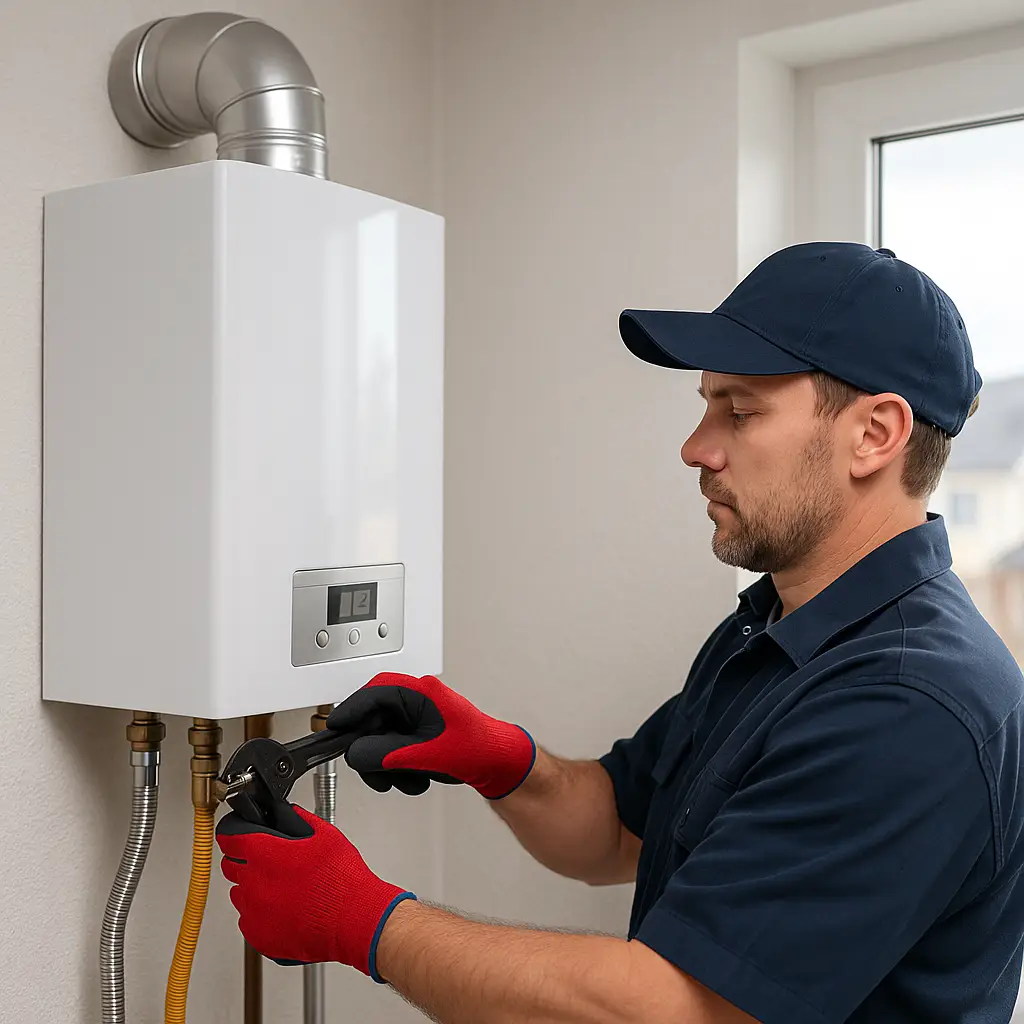How to Choose the Right Water Heater for Your Utah Home (and Why I Picked Mine)
How to Choose the Right Water Heater for Your Utah Home (and Why I Picked Mine)

Introduction
When it comes time to replace your water heater, the number of options can be overwhelming. Tankless or traditional? Power-vent or direct-vent? High-efficiency or standard?
As someone restoring a 114-year-old farmhouse in Utah, I had the unique opportunity to pick any water heater I wanted — and I discovered just how complex the decision really is.
Before you can choose the right water heater for your home, you need to understand what’s available and how each option fits your specific situation.
TL;DR
-
Utah homeowners can choose from 62+ gas water heater models, each with unique venting and efficiency options.
-
Tankless systems save space and energy but vary in features like built-in recirculation pumps.
-
Traditional tank heaters come in several venting styles (atmospheric, power vent, direct vent, etc.), each suited to different home layouts.
-
Efficiency vs. cost: Higher-end models may cost more up front but can save significantly on gas and energy over time.
-
My final choice: a powered direct-vent gas water heater that safely pulls in outside air and exhausts gases horizontally — ideal for cold Utah winters and my older home’s layout.
Understanding Tankless Water Heaters
Tankless systems have become popular for their on-demand hot water and energy efficiency. In Utah’s gas-dominant market, homeowners can choose from several models within the Infinity Series — including the GR, GS, L, and K Series — each with different features and price points.
The Major Differences
-
GR Series: Includes a built-in recirculation pump for instant hot water.
-
GS Series: Same as the GR, but without a recirc pump (less cost, slower hot water delivery).
-
L Series: Adds back the recirc pump and promotes modern, “green” design.
-
K Series: Simplified version without a pump, trading convenience for affordability.
A recirculation pump may seem minor, but it’s the difference between instant hot water and several seconds of cold water waste — and it can raise the price by several thousand dollars.
So when customers ask, “How much is a tankless water heater?” the answer depends on what features you need. You can install a basic tankless for around $3,000, or spend $6,000+ for a top-tier, efficient unit that pays for itself in long-term gas savings.
The Wide World of Tank Water Heaters
You might think choosing a traditional tanked water heater would be simpler — but even here, you’ll find dozens of variations.
Let’s break them down:
1. Atmospheric Vent Gas Water Heater
-
The most common and affordable option.
-
Vents naturally through your home’s flue stack.
-
Available in multiple sizes (30–50 gallons).
-
Common at big box stores, but contractor-grade models have superior components and warranties.
2. Fan-Assisted Atmospheric Vent
Adds a fan to assist exhaust flow. Slightly higher in price but improves efficiency and safety, especially in homes with long or complex vent paths.
3. Dampered Atmospheric Vent
Includes a damper to optimize venting and prevent flue gases from backdrafting into the home — a valuable feature if your furnace shares the same flue.
4. Power Vent Water Heater
Uses a motorized blower to vent exhaust horizontally through PVC piping. Great for remodels or homes without easy roof access.
5. Powered Direct-Vent Gas Water Heater
Pulls outside air into the combustion chamber and safely exhausts gases horizontally. This setup:
-
Improves indoor air safety.
-
Allows flexible venting through walls instead of roofs.
-
Is ideal for sealed mechanical rooms or additions where you want to avoid cold air infiltration.
6. Direct-Vent (Non-Powered)
Uses natural airflow for combustion and venting, typically with metal venting instead of PVC. A simpler, low-maintenance alternative — but less flexible in vent routing.
7. High-Efficiency EF Series
The premium category. Uses advanced combustion for maximum efficiency.
However, with Utah’s low natural gas prices, the ROI (return on investment) can be minimal for many homeowners.
What About LowNOx Models?
If you’ve lived in California, you’re familiar with LowNOx standards — these models reduce nitrogen oxide emissions for cleaner combustion.
In Utah, LowNOx is not yet required statewide, but it’s an environmentally friendly choice for those who prioritize sustainability. They’re available across nearly every venting style.
Why I Chose a Powered Direct-Vent Gas Water Heater
For my 1,050-square-foot, century-old Utah farmhouse, a powered direct-vent model was the perfect fit.
Here’s why:
-
Cold-weather protection: I didn’t want to cut a hole in the wall and let 5-degree air into my mechanical room. Pulling in only the combustion air needed keeps the space warm and prevents frozen pipes.
-
Horizontal venting: I can vent out the side of the house instead of waiting to redo my roof — a major advantage in winter.
-
Safety: By sealing the combustion process, I avoid any risk of flue gases or backdrafting into the living space.
-
Longevity: The design improves combustion efficiency and extends the heater’s life.
Yes, I paid about twice as much as I would for a standard atmospheric vent model — but I avoided costly freeze damage, gained flexibility, and built a safer system that fits my home’s unique needs.
The Real Cost of a Water Heater
Water heaters can range from $2,000 to $7,500, depending on:
-
Size and recovery rate
-
Venting type
-
Efficiency level
-
Features like recirculation pumps or LowNOx design
-
Installation needs (expansion tanks, pans, strapping, etc.)
Buying a “$700 water heater from Home Depot” rarely tells the full story.
Contractor-grade models include better components, longer warranties (6–14 years), and professional installation that ensures compliance with Utah plumbing and safety codes.
Key Takeaway
Choosing a water heater isn’t about chasing the lowest price — it’s about finding the right system for your home, your comfort, and your climate.
In my case, spending more up front saved me future costs in repairs, energy waste, and safety concerns. When you’re investing in a system that will serve your family for the next decade or more, it pays to have a knowledgeable professional help you design the best solution for your home.
If you’re unsure which model fits your needs, talk to our partners at At Your Service Pros or the experts here at Healthy Water and Air — we’ll help you make sense of all 62 options and choose the one that truly fits your home.
